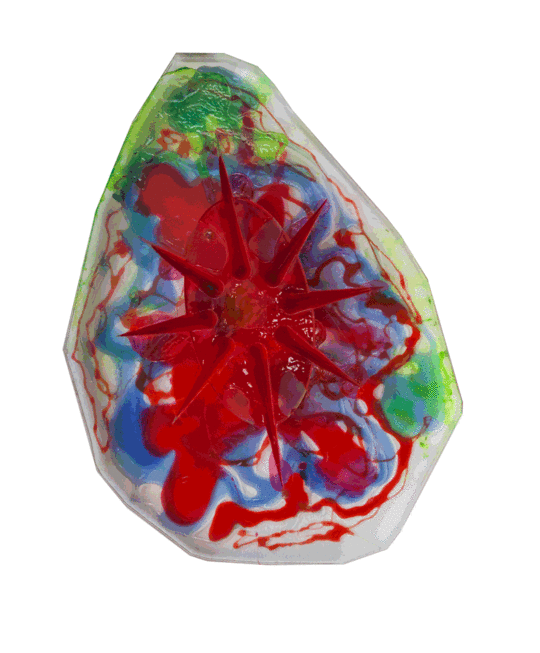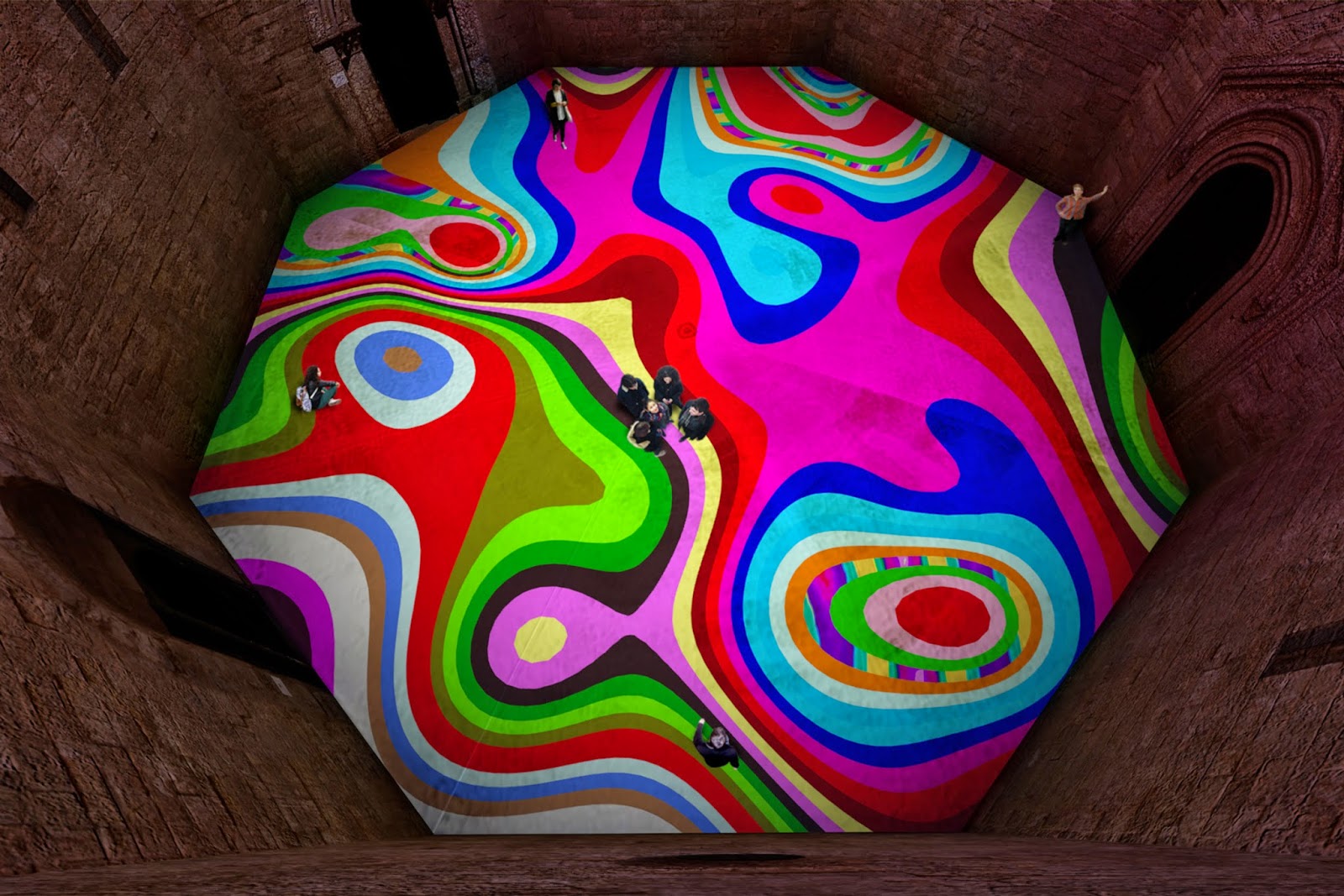L’artiste Miguel Chevalier :
Depuis 1978, Miguel Chevalier utilise l’informatique comme moyen d’expression dans le champ des arts plastiques. Il s’est imposé internationalement comme l’un des pionniers de l’art virtuel et du numérique.
Son travail, expérimental et pluridisciplinaire, aborde la question de l’immatérialité dans l’art, ainsi que les logiques induites par l’ordinateur, tels que l’hybridation, la générativité, l’interactivité, la mise en réseau.
Le travail de Miguel Chevalier poursuit un constant dialogue avec l’histoire de l’art, dans une continuité et une métamorphose de vocabulaire, pour explorer et expérimenter un nouveau langage pictural. Les images qu’il nous livre interrogent perpétuellement notre relation au monde.
www.miguel-chevalier.com
Les contreparties
Ouvrage essentiel pour une approche de l’art numérique et contemporain sous ses différents aspects, la monographie « Miguel Chevalier » réalisée grâce à ce financement est la première des contreparties proposées en remerciement de votre soutien. Un ouvrage qui se doit d’être dans toutes les bibliothèques !!
50 ouvrages sont proposés à un prix exceptionnel de 26 euros pour les plus rapides, puis 200 ouvrages au prix de vente de 39 euros. Les frais de port sont offerts.Pour les contreparties suivantes, j’ai imaginé spécialement pour ce financement participatif, plusieurs éditions limitées signées et numérotées.
Les éditions limitées Fractal coraux 1 et Fractal coraux 2, réalisées par découpe laser, sont inspirées des merveilles de la mer. Ces éditions préfigurent l’exposition Digital Abysses que je réalise à la Base sous-marine de Bordeaux du 9 mars au 20 mai 2018, la plus importante que j’ai accomplie à ce jour.
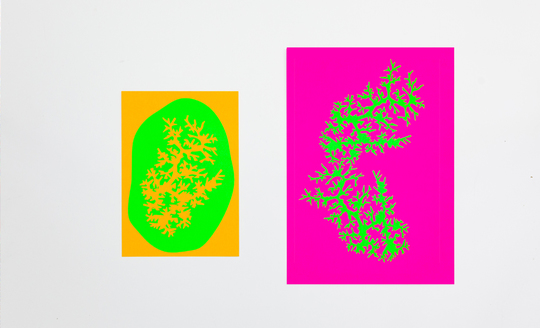
Fractal Coraux 1 et Fractal Coraux 2, 2018
Découpe laser dans papiers fluo – 14,8 x 21 cm et 21 x 29,7 cm
L’édition limitée L’Origine du Monde est extraite de la grande installation numérique qui sera projetée dans cette même exposition à la Base sous-marine de Bordeaux.
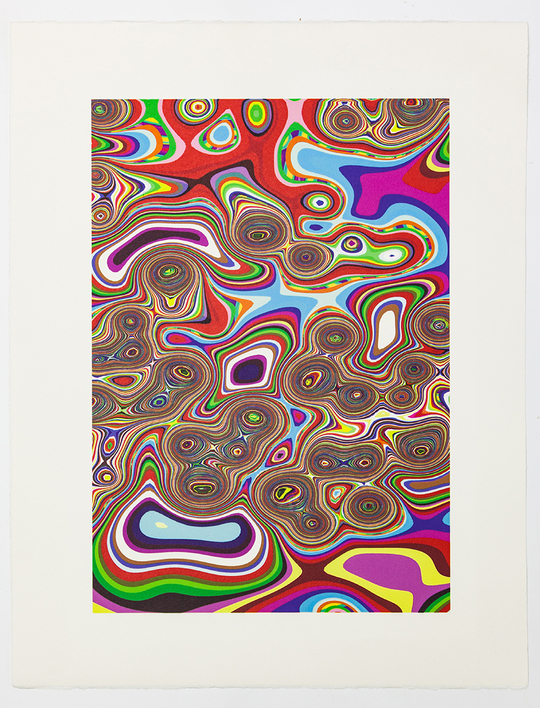
L’Origine du Monde, 2018
Impression numérique sur papier arche. Dimension pleines marges : 65 cm x 50,50 cm – Dimension du sujet : 35 cm x 50 cm
Quant aux œuvres uniques proposées, elles seront présentées dans des cabinets de curiosités dans l’exposition Digital Abysses à la Base sous-marine de Bordeaux. Poursuivant mon exploration de la nature, ces oeuvres revisitent par le biais du numérique, le thème de la faune et de la flore sous-marine (algues, plancton, coraux…). Elles questionnent la notion de vie artificielle, interpellent sur la fragilité de ces écosystèmes et sur une biodiversité des océans à préserver.
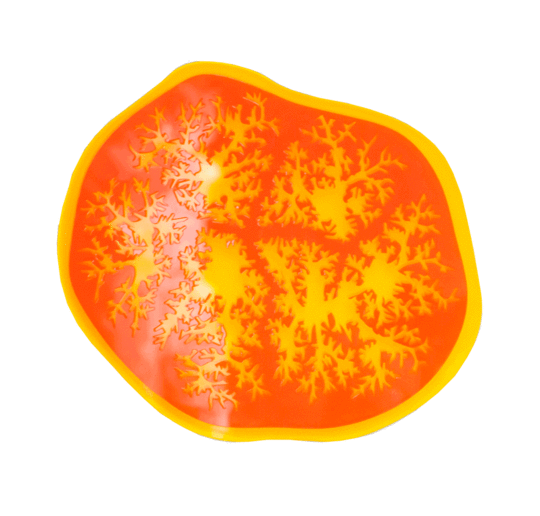
Corail 1, 2017 – Résine Dacryl et plexiglas – 29,50 x 24 cm – Vue de jour et vue à la lumière UV

Plancton 2, 2017 – Résine et pigment fluo – 35 x 24 x 2,8 cm – Vue de jour et vue à la lumière UV
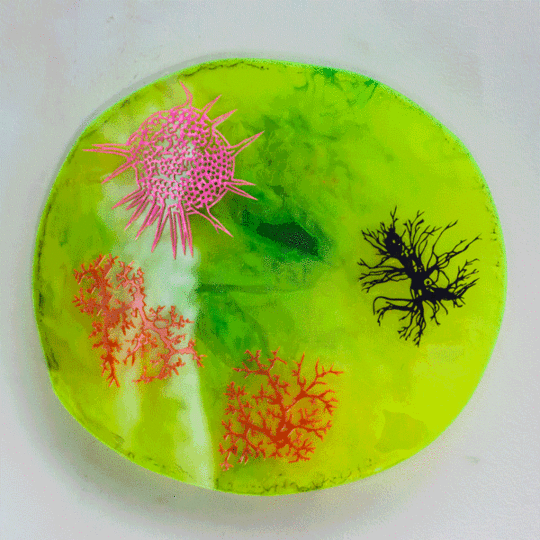
Radiolaire 8, 2017 – Résine Dacryl et plexiglas – 29,50 x 32 cm – Vue de jour et vue à la lumière UV

Corail 2, 2017 – Résine Dacryl, pigments fluo et plexiglas – 39 x 39 cm – Vue de jour et vue à la lumière UV
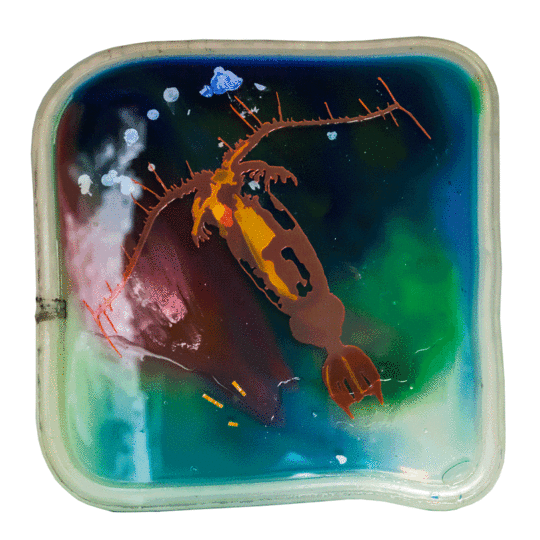
Plancton 3, 2017 – Résine Dacryl, pigments fluo et plexiglas – 39,50 x 39,50 cm – Vue de jour et vue à la lumière UV

Body Voxels – The Walker, 2017
Sculpture en résine réalisée par impression 3D – 26 cm x 26 cm x 31 cm

